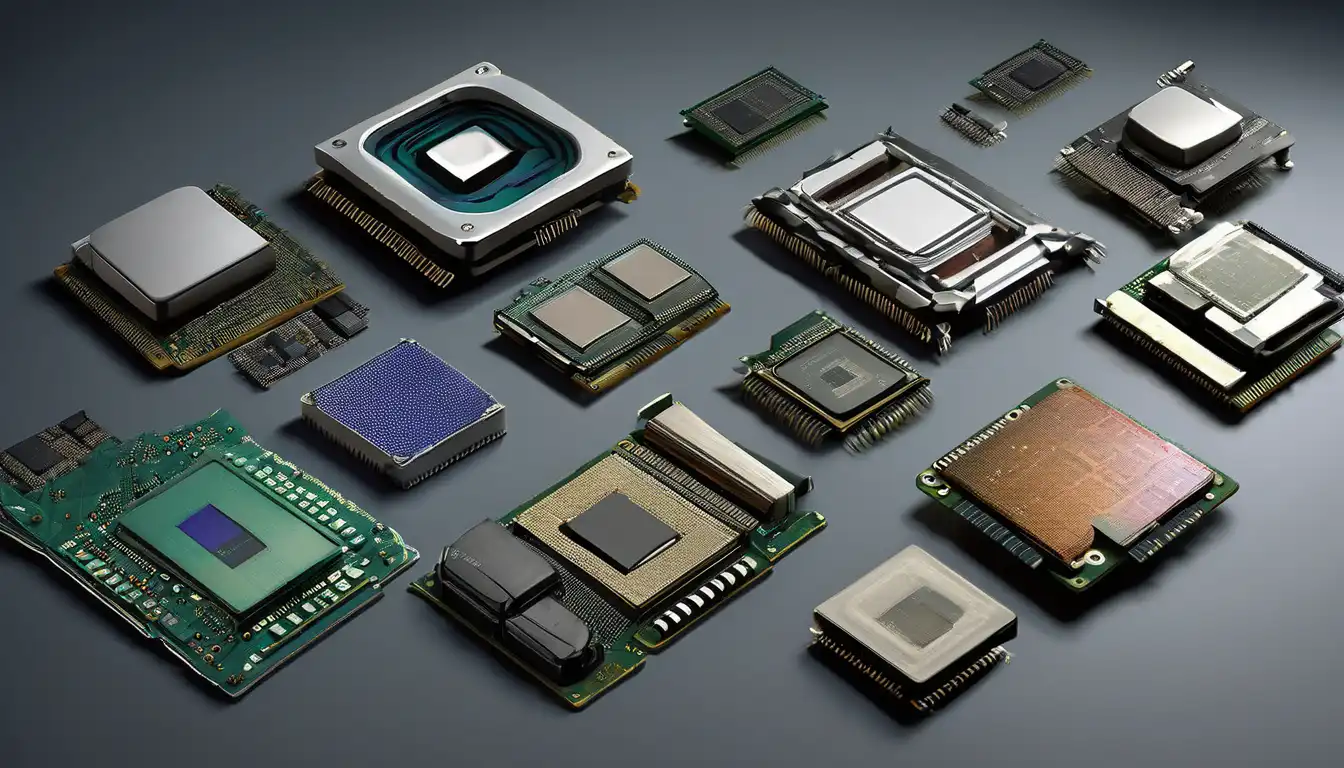The Dawn of Computing: Early Processor Technologies
The evolution of computer processors represents one of the most remarkable technological journeys in human history. Beginning with massive vacuum tube systems that occupied entire rooms, processors have transformed into microscopic marvels capable of billions of calculations per second. The first electronic computers, developed in the 1940s, used vacuum tubes as their primary processing components. These early machines, such as the ENIAC, contained approximately 17,000 vacuum tubes and consumed enormous amounts of power while offering processing capabilities that modern smartphones surpass millions of times over.
The Transistor Revolution
The invention of the transistor in 1947 marked a pivotal moment in processor evolution. These semiconductor devices replaced bulky vacuum tubes, offering smaller size, lower power consumption, and greater reliability. The transition to transistors enabled computers to become more practical for commercial and scientific applications. By the late 1950s, transistor-based computers began dominating the market, setting the stage for even more significant advancements in processing technology.
The Integrated Circuit Era
The development of integrated circuits in the 1960s represented another quantum leap in processor technology. Jack Kilby and Robert Noyce independently developed methods for integrating multiple transistors onto a single silicon chip, creating the foundation for modern microprocessors. This innovation allowed for exponential growth in processing power while simultaneously reducing size and cost. The first commercial integrated circuits contained only a few transistors, but their potential for scaling was immediately apparent to industry pioneers.
Moore's Law and Its Impact
In 1965, Gordon Moore observed that the number of transistors on integrated circuits was doubling approximately every two years. This observation, later formalized as Moore's Law, became a guiding principle for the semiconductor industry. The consistent doubling of transistor density drove unprecedented improvements in processing power, energy efficiency, and cost reduction. For decades, manufacturers raced to keep pace with this prediction, leading to the rapid advancement of processor technology that continues to shape our digital world.
The Microprocessor Revolution
The early 1970s witnessed the birth of the microprocessor, a complete central processing unit on a single chip. Intel's 4004, released in 1971, contained 2,300 transistors and operated at 740 kHz. This groundbreaking invention made computing power accessible to consumers and small businesses, paving the way for the personal computer revolution. Subsequent processors like the Intel 8080 and Motorola 6800 further advanced microprocessor capabilities, enabling more sophisticated applications and systems.
The x86 Architecture Dominance
Intel's 8086 processor, introduced in 1978, established the x86 architecture that would dominate personal computing for decades. This architecture's backward compatibility allowed software to run on successive generations of processors, creating a stable ecosystem that encouraged software development. The IBM PC's adoption of Intel processors in 1981 cemented x86's position as the industry standard, leading to widespread compatibility and innovation across the computing landscape.
The Rise of RISC Architectures
While complex instruction set computing (CISC) architectures like x86 dominated the personal computer market, reduced instruction set computing (RISC) architectures emerged as powerful alternatives for specialized applications. RISC processors, with their simplified instruction sets, offered higher performance for specific tasks and found success in workstations, servers, and embedded systems. Companies like Sun Microsystems, IBM, and ARM developed successful RISC architectures that competed effectively in their respective markets.
Multi-Core Processing
As physical limitations began challenging Moore's Law in the early 2000s, processor manufacturers shifted focus from increasing clock speeds to adding multiple processing cores on a single chip. This approach allowed for continued performance improvements while managing power consumption and heat generation. Dual-core, quad-core, and eventually processors with dozens of cores became standard across computing devices, enabling parallel processing and multitasking capabilities that transformed user experiences.
Modern Processor Innovations
Contemporary processor development focuses on specialization, energy efficiency, and heterogeneous computing. Modern CPUs incorporate graphics processing units, artificial intelligence accelerators, and specialized cores for specific tasks. The rise of mobile computing has driven innovations in power efficiency, while cloud computing demands have fueled development of server-grade processors with exceptional performance characteristics. Companies like AMD, Intel, and ARM continue pushing boundaries with advanced manufacturing processes and architectural improvements.
The Future of Processor Technology
Looking ahead, processor evolution continues toward quantum computing, neuromorphic architectures, and photonic computing. Quantum processors promise to solve problems intractable for classical computers, while neuromorphic chips mimic the human brain's neural structure for efficient AI processing. Photonic computing uses light instead of electricity for potentially faster and more energy-efficient operations. These emerging technologies represent the next frontier in processor evolution, potentially revolutionizing computing once again.
Impact on Society and Technology
The evolution of computer processors has fundamentally transformed nearly every aspect of modern life. From enabling global communication networks to powering scientific research, medical advancements, and entertainment systems, processors have become the invisible engines driving technological progress. The continuous improvement in processing power has made possible innovations that were once science fiction, demonstrating how fundamental advances in basic technology can reshape human civilization.
The journey from room-sized vacuum tube computers to pocket-sized supercomputers illustrates humanity's remarkable capacity for innovation. As processor technology continues evolving, it will undoubtedly enable new capabilities and applications that we can scarcely imagine today. The history of processor evolution serves as both an inspiring testament to human ingenuity and a foundation for future technological breakthroughs that will continue shaping our world for generations to come.
